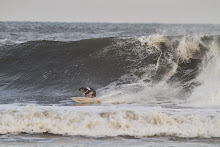Allright, enough molecular already. Hopefully you at least got a sense of what we are doing. Something in the brains of Aplysia (California) and Dolabrifera (Costa Rica) is different, because the former learns and the latter doesn’t. We want to find out what. That is the how question.
But we, that is I, also want to figure out why.
This question is much trickier. Why don’t these Dolabrifera show sensitization? Why don’t they learn? Part of coming to Costa Rica is to get insights. How do we do this?
You know what Yogi Berra says, don’t you? You can observe a lot by just watching.
Put your head in their world and just be there. Here is Leonid putting his head into the world of Dolabrifera.
Here is what he sees.
An active, responsive slug. Dolabrifera movements are quicker than those of Aplysia. During low tide in the noon-day sun, these slugs are all over the tidepools doing this. They are anything but dullards. The intuition I get from watching them is that they couldn’t have LOST sensitization, like an absent-minded professor. Rather they would seem to be actively suppressing it. If these slugs were sensitized, a wisp of water current would stop them in their tracks. Reduce them to a little ball of slug jelly. That’s what happens to Aplysia. But Aplysia’s ecology seems much slower paced to me. Maybe they can afford to be a slug ball some of the time. Here’s a representative video from you-tube.
Aplysia in situ
This guy covers much less ground, and his muzzle (called proprodium) is not nearly as quick. He won’t be slowed down much by a strong withdrawal reflex. How bout you all? Do you see any differences that might explain no sensitization in Dolabrifera, and lots of it in Aplysia?
Thursday, March 18, 2010
Subscribe to:
Post Comments (Atom)

No comments:
Post a Comment